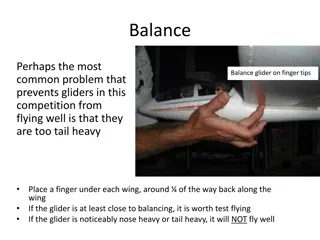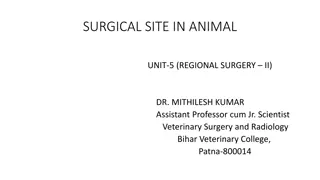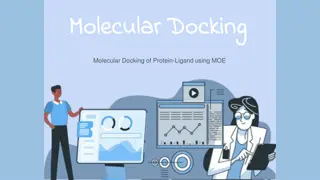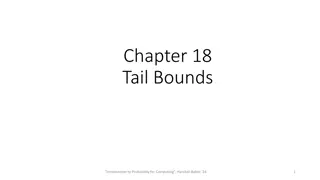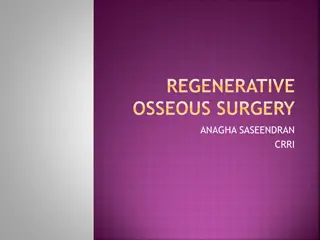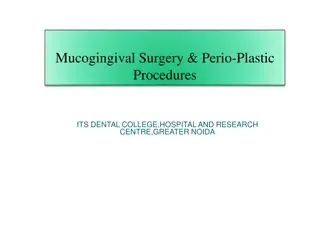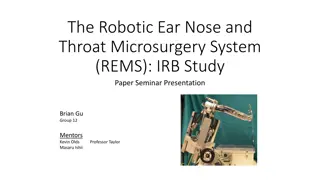Surgical Affection of Tail and Docking - Regional Surgery Insights
An overview of surgical issues involving the tail in animals, including traumatic injuries, complications, and treatment methods like amputation. The content discusses the composition of the tail, types of injuries, predisposing factors, and the importance of proper treatment to prevent severe complications such as gangrene and toxaemia.
Download Presentation

Please find below an Image/Link to download the presentation.
The content on the website is provided AS IS for your information and personal use only. It may not be sold, licensed, or shared on other websites without obtaining consent from the author. Download presentation by click this link. If you encounter any issues during the download, it is possible that the publisher has removed the file from their server.
E N D
Presentation Transcript
SURGICAL AFFECTION OF TAIL AND DOCKING UNIT-5 REGIONAL SURGERY -2 Dr Mithilesh Kumar Assistant Professor cum Jr. Scientist Veterinary Surgery and Radiology Bihar Veterinary College, Patna-14.
Tail is composed of vertebrae, muscle, fascia and skin. The no. of coccygeal vertebrae varies in species Middle coccygeal artery and lateral coccygeal vein located A paralysed tail is abnormally flexible.
TRAUMATIC INJURIES:- Open wound occurs as a result of trauma. The wound should be treated on general principles. The coccygeal vertebrae may get fractured or dislocated. Injuries near the sacrococcygeal joint may cause paralysis
Tail should be amputed in complete paralysis. Found in all species but more in buffaloes. Exact aetiology not known but multiple fracture. The lesion is due to some form of trauma Other fracture include concrete floor, close confinement, hot season and large body weight.
Predispose to greater risk of trauma and infection. Thickening and fissuring of the epidermis. Secondary bacterial infection produce necrosis Microbiological examination show mixed infection. In mild cases dry necrosis and loss of hair to the tip.
In severe cases complication like arthritis, multiple abscessation and gangrene cause toxaemia and death. TREATMENT:- Affected part cleaned with antiseptic creams are used Parenteral administration of antibiotic. In severe cases amputation required.
AMPUTATION OF TAIL : Indication:- Irreparable injuries of tail like fracture, necrosis or gangrene, paralysis Improve appearance in dog. Tourniquet applied at base of tail. The exact point of disarticulation is determined by palpation.
Aseptic preparation of area. Semi-circular incision is given on dorsal or ventral surface of tail. The incision placed distal coccygeal joint to be disarticulated. Tourniquet may be loosened to identify the vessels. Tail is disarticulated by transection. Haemostasis checked by loosening tourniquet. Simple interrupted and horizontal mattress.
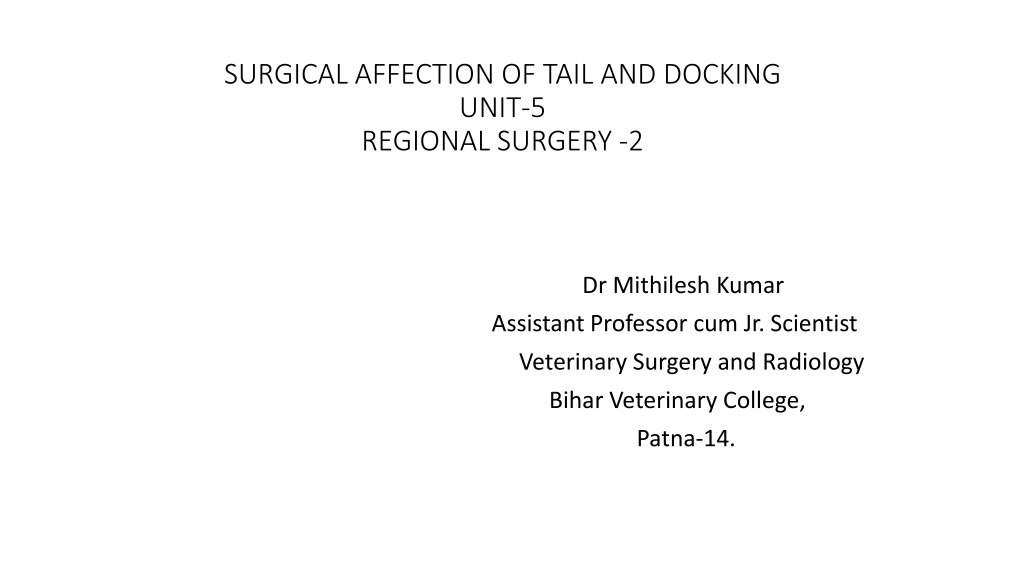

![Read⚡ebook✔[PDF] Linking the Space Shuttle and Space Stations: Early Docking Te](/thumb/21519/read-ebook-pdf-linking-the-space-shuttle-and-space-stations-early-docking-te.jpg)






